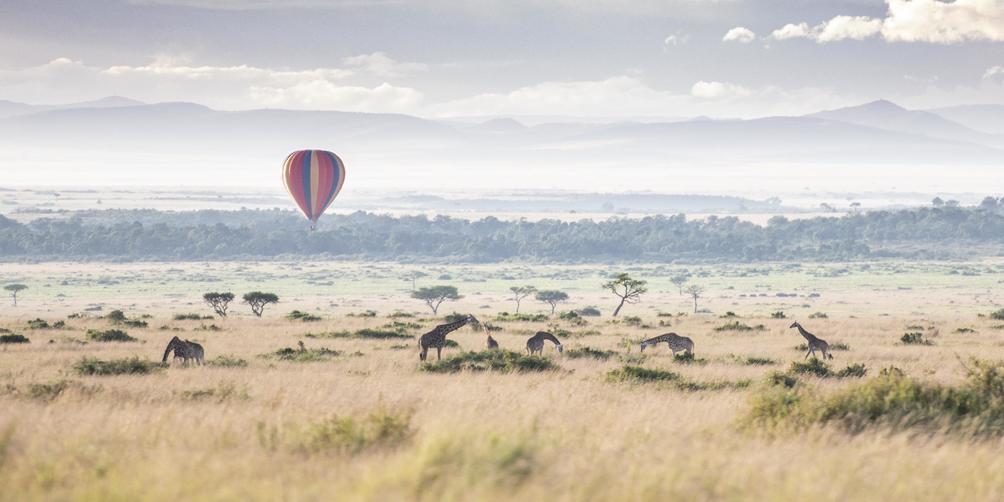Wilderness Mara
Highlights
- Wilderness Mara is the only camp that allows guests across to both sides of the Mara River, opening up more space, more wildlife, and fewer crowds.
- The Mara Triangle is known for its extraordinary wildlife density, particularly during the Great Migration.
- With fewer lodges and vehicles, sightings feel exclusive and unhurried, especially during the Great Migration’s dramatic river crossings.
Destination: Where spreading plains rise to meet the Oloololo Escarpment, the Mara River carves a timeless path through this ancient earth, and a wedge of wilderness beckons: the Mara Triangle. This section of Kenya’s Masai Mara National Reserve is celebrated for its extraordinary wildlife density, particularly during the Great Migration. Here, timeless wilds meet bold conservation. Fewer vehicles, fewer voices, and yet more life, more tension, more drama. Crocodiles drift unseen in the Mara River, where the brave must cross. Lions watch from the tall grass, still. And when the thunder of hooves begins, the land holds its breath.
Experience: The Mara Triangle offers one of the most exclusive and rewarding safari experiences in the greater Masai Mara. Managed by the Mara Conservancy, this region is renowned for its innovative conservation model: a successful public-private partnership that ensures well-maintained roads, effective anti-poaching patrols, and sustainable tourism practices. With fewer lodges and vehicles, sightings feel exclusive and unhurried, especially during the Great Migration’s dramatic river crossings. The landscape is a stunning mix of open plains, riverine forest, and seasonal marsh, alive with big cats, elephants, black rhino, and prolific birdlife. Activities include expertly guided morning and afternoon game drives (note: night drives are not permitted), exceptional birding with over 470 recorded species, cultural visits to nearby Maasai manyattas, and hot air balloon safaris operated by Governors’ Balloon Safaris (available at an additional cost).
Impact: For many decades, Governors’ has worked closely with communities and conservation partners to ensure that wildlife tourism meaningfully benefits people and nature. This will continue under our own Impact framework, always keeping our pillars “Educate, Empower, and Protect” in mind. We recognise that meaningful conservation must ripple outward from our camps and concessions to surrounding communities and the wider national landscape, and that conservation must be practical, inclusive and community-anchored.
Spheres of Influence:
Camp – Wilderness Mara will host a lion monitor from the Mara Predator Conservation Programme in camp. This hands-on role not only helps track predator movement within the Mara Triangle, but also extends into broader education and mitigation efforts with local herders and communities, encouraging coexistence. Support goes to predator-proof bomas, training for livestock herders, and collars which provide valuable data on lion movements.
Region – Our Children in the Wilderness partnership supports a school near Kawai, a deforestation-threatened catchment area. Through environmental education and tree planting, we equip the next generation to protect their environment and foster long-term ecosystem resilience.
Country – We help protect a critical catchment area through support of the Pangolin Project in Nyekweri Forest, home to Kenya’s only known giant pangolins. This vital biodiversity hotspot and water source faces pressure from land -use change. Our support aids monitoring, forest protection, and climate resilience efforts. Nationally, we support the Mara Elephant Project’s rapid-response teams, fostering coexistence between people and elephants, and the Mara Raptor Project, which protects over 60 raptor species through nest monitoring, tracking, and bird rehabilitation.
Habitats: Namely, grassland plains (vital grazing for migratory plains game); thickets (secure habitat for smaller predators and birds); riverine forests (dense forests of evergreen trees along the river and streams); marsh (seasonal wetlands teeming with birdlife).
Wildlife: Framed by the Oloololo Escarpment and the snaking Mara River, the Mara Triangle is a sanctuary of staggering biodiversity: home to iconic African wildlife including resident black rhino, vast herds of grazers, and rarer species like servals and bat-eared foxes. Managed by the Mara Conservancy, this remote section of the Masai Mara is exceptionally well-protected, less crowded, and expertly managed. Here, the Great Migration reaches its dramatic crescendo: more than a million wildebeest, hundreds of thousands of zebra and countless gazelles surge across crocodile-filled waters. Yet even when the herds move on, the spectacle endures. Lions hunt the plains. Elephants stir the riverine forest. Birdlife dazzles. Notable bird species include martial eagle, blue swallow, grey crowned crane, rufous-bellied heron and Jackson’s widowbird.
Wilderness Mara: Formerly Little Governors’ Camp, this classic East African property is being completely rebuilt to offer a more intimate, lower-impact experience, with just 12 tented suites set along the edge of a thriving marsh ecosystem.
Wilderness Mara is all about access: set in the Mara Triangle, it’s the only camp that allows guests across to both sides of the Mara River, opening up more space, more wildlife, and fewer crowds. This is classic safari territory: big skies, roaming herds, and raw drama at the river crossings. We’ve kept the camp true to its East African roots; elegant, grounded, and deeply connected to place, while adding just the right touches of comfort: a spa to unwind and a gym for the energetic.
Children of all ages are welcome.



